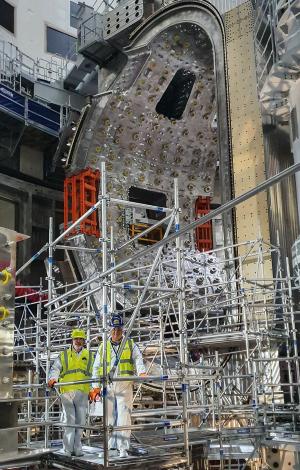Plasma physicists never retire
In the five years since David left, many things have changed in the fusion world, one of the most striking being the sudden emergence of private investment in fusion and the plethora of startups being established throughout the world. "With a few exceptions, it is difficult to follow what is happening there. For reasons that are easy to understand, the startups do not publish much detail on the technology they are implementing or plan to develop, which makes it difficult to judge the merits of the time scales they advertise."
After decades of relative indifference, fusion seems to be on every newspaper front page and magazine cover. However, the former head of ITER science harbours a sober vision of the future. "Fusion alone will not solve the climate problem. But it can be a significant long-term energy source. And it's one of the very few major energy resources that humanity will have available in the future ..."
ITER has also changed dramatically over the past five years. "When I left, none of the big components had yet arrived. Now the vision in the Assembly Hall is simply extraordinary. You expect to be overwhelmed and indeed you are, way beyond your expectations. It's marvellous to see it happening after all these years." But beyond the technological achievements and the "elegant engineering," what deeply moved David was the sheer beauty of what he saw—"the different shapes, colours and shades" that lend to ITER its unexpected artistic dimension.


